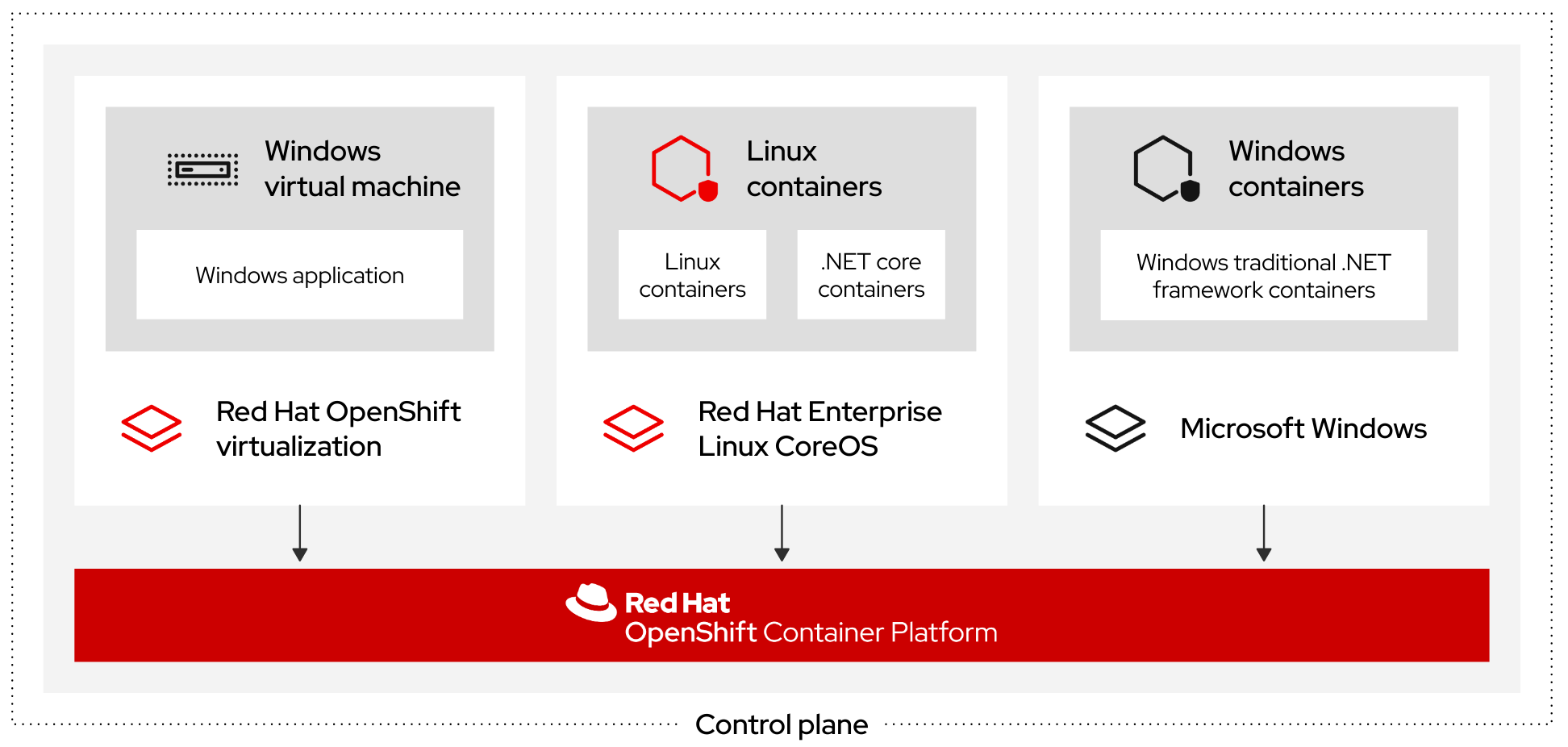Bring Windows applications to Red Hat OpenShift without needing to rebuild
Containers are used as the primary platform for application development and ideally support the 2 leading operating systems (OS) in datacenters — Red Hat® Enterprise Linux® and Microsoft Windows. Without a standard OS, applications are often siloed, which can cause complexities in management and a lag in application modernization.
Why Windows containers?
Windows servers have a long history in server operating systems. But as application development shifts to cloud-native deployments, traditional Windows applications have transitioned from datacenters to the cloud with the support of container technology.
To avoid rebuilding these Windows-based applications and get them to the cloud, some container orchestration platforms can support Windows containers while delivering the benefits of Kubernetes. Windows and Linux-based applications can then be managed side-by-side in a single container orchestration platform like Red Hat OpenShift®.

Windows containers on Red Hat OpenShift
Get the benefits of Kubernetes by running your Windows applications in a scheduled, orchestrated, and managed manner with Red Hat OpenShift.
Red Hat OpenShift orchestrates both Red Hat Enterprise Linux and Windows to run as the building blocks of your applications. It supports .NET core applications, traditional .NET framework applications, and other Windows applications through the Windows Machine Config Operator (WMCO).
Windows Machine Config Operator enables Windows server workloads on Red Hat OpenShift 4.6+ clusters on cloud and on-premise platforms. Through the operator cluster, administrators can add Windows worker nodes as a day 2 operation and enable scheduling of Windows workloads.
All workloads, whether Linux or Windows-based, can then be managed and viewed together through the Red Hat OpenShift management console.

Benefits of running Windows containers on Red Hat OpenShift
- Easily lift and shift Windows applications
- No need to re-architect or write new code
- Increase density & lower deployment cost
- Improve productivity and DevOps agility
- Portability of apps and dependencies





